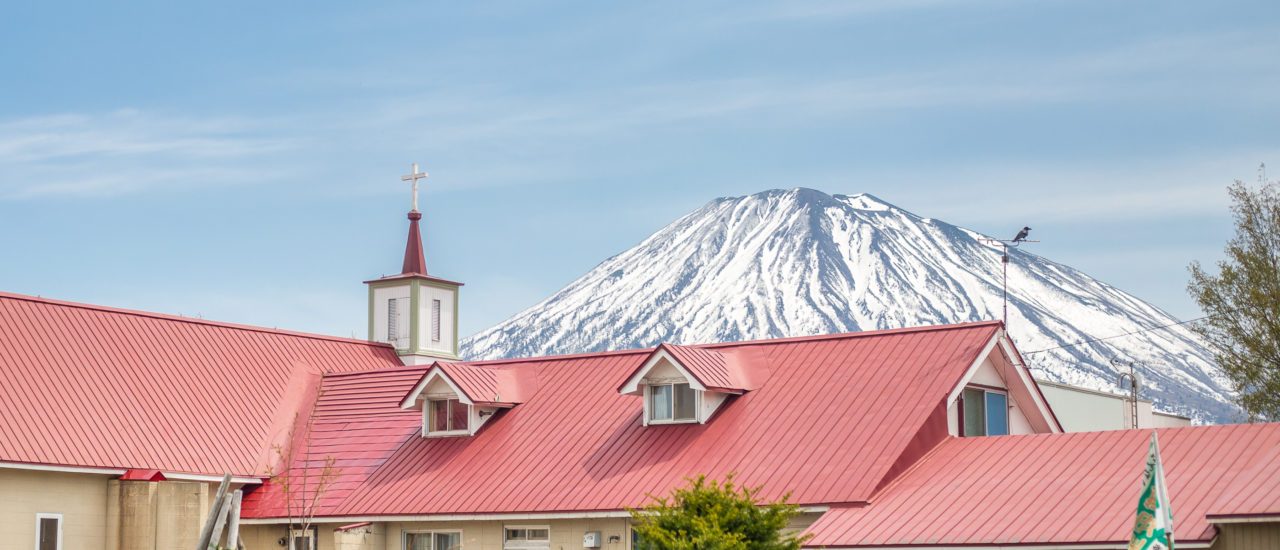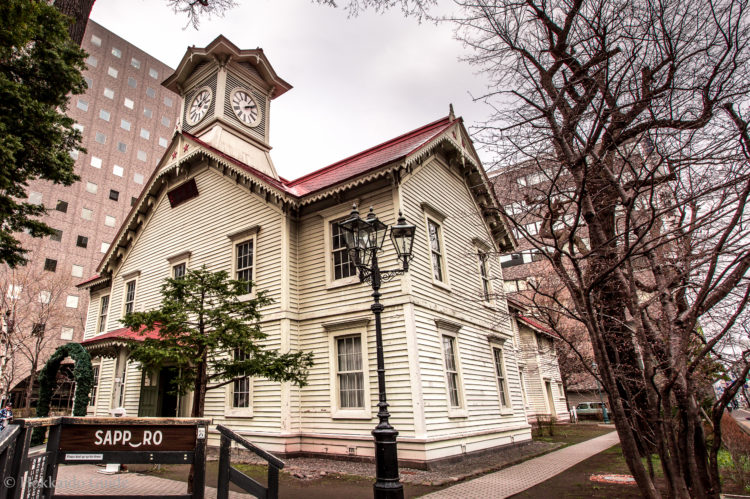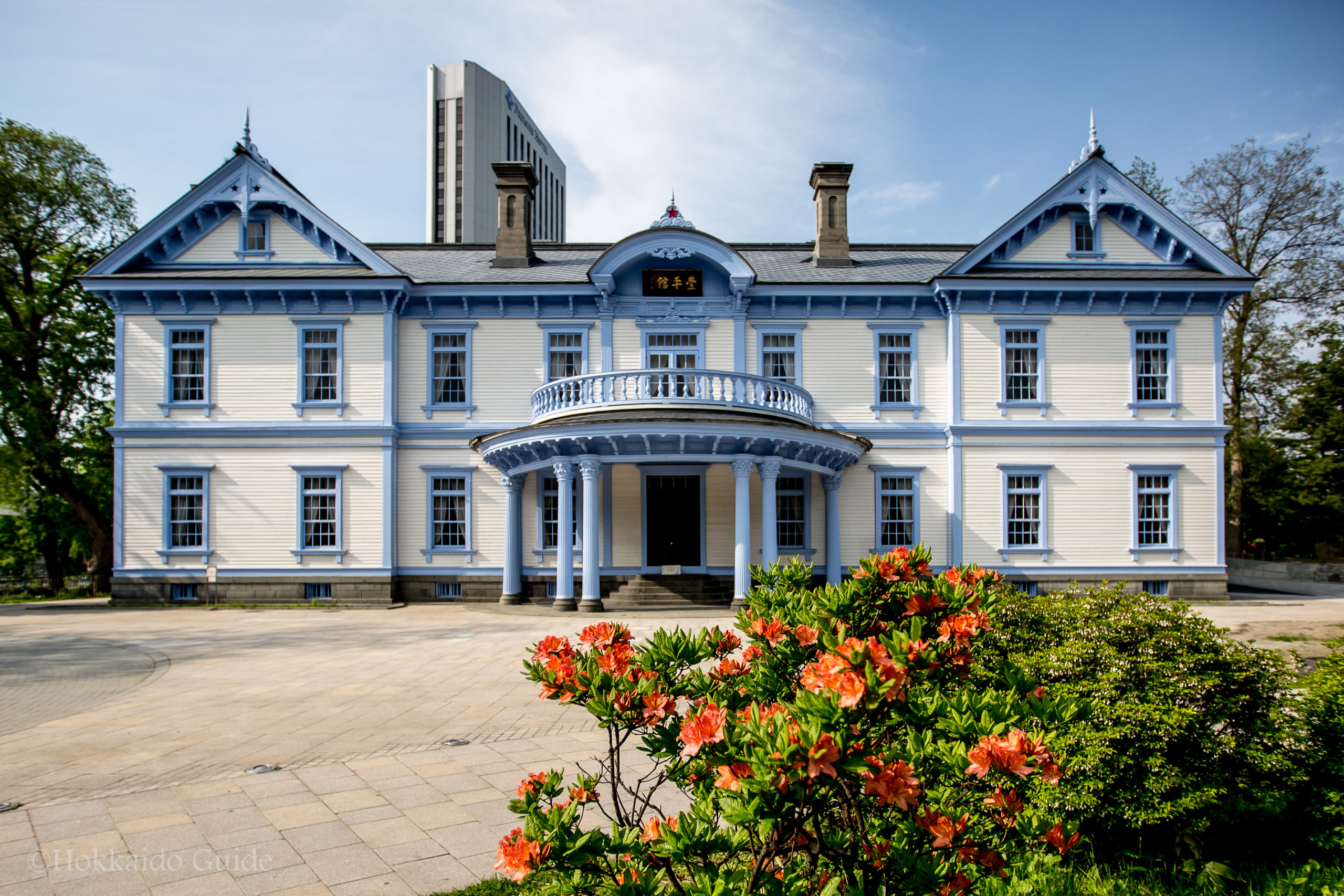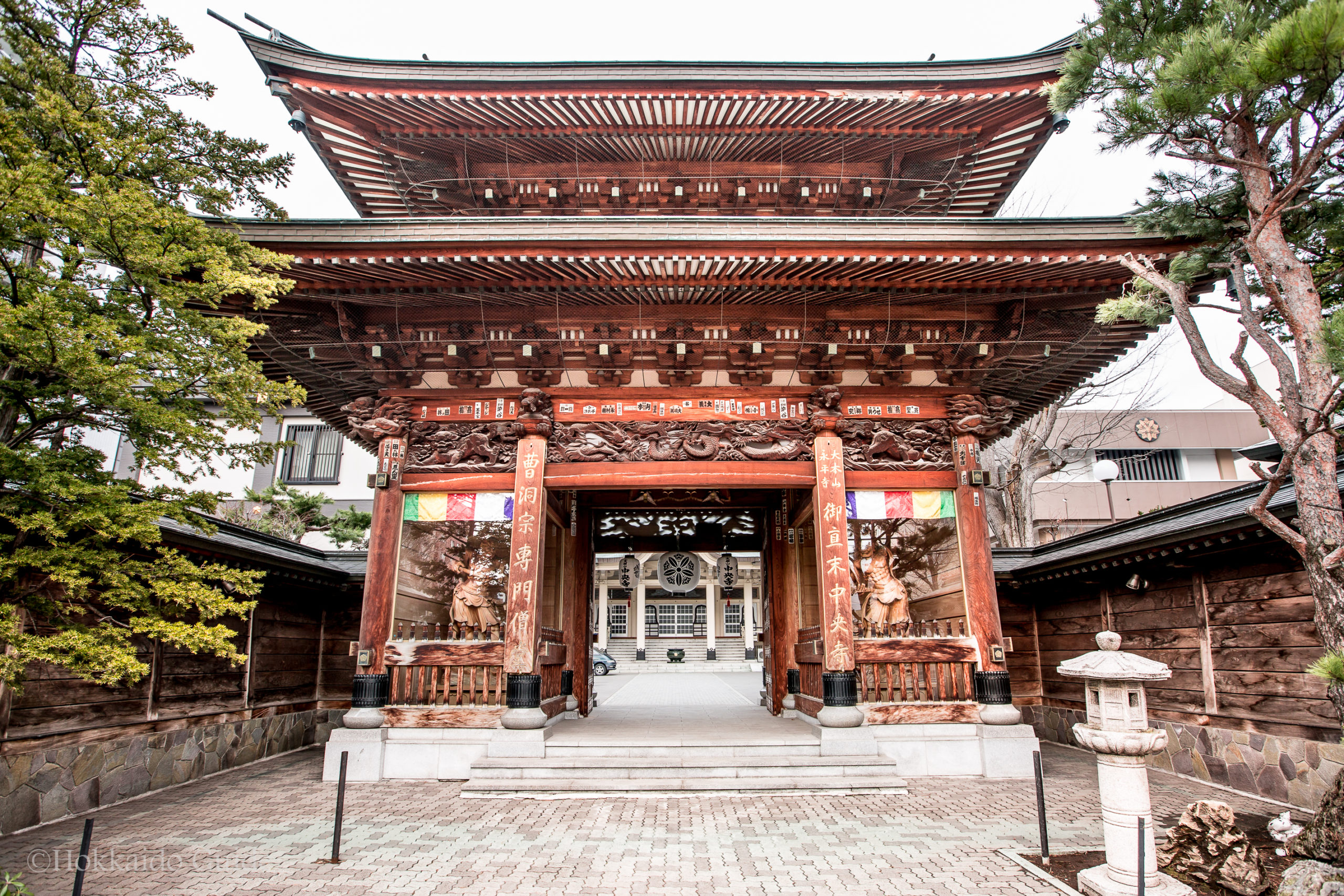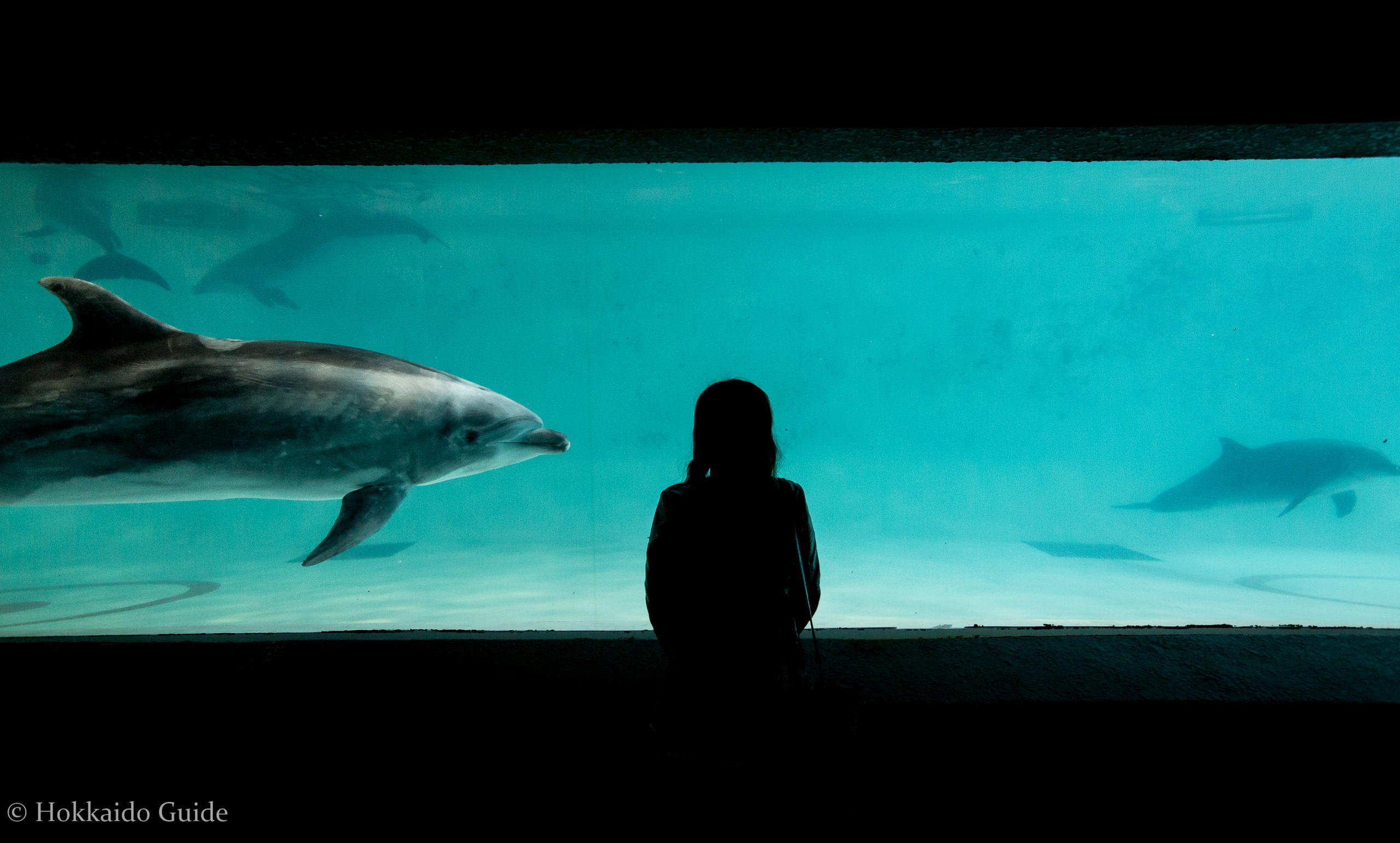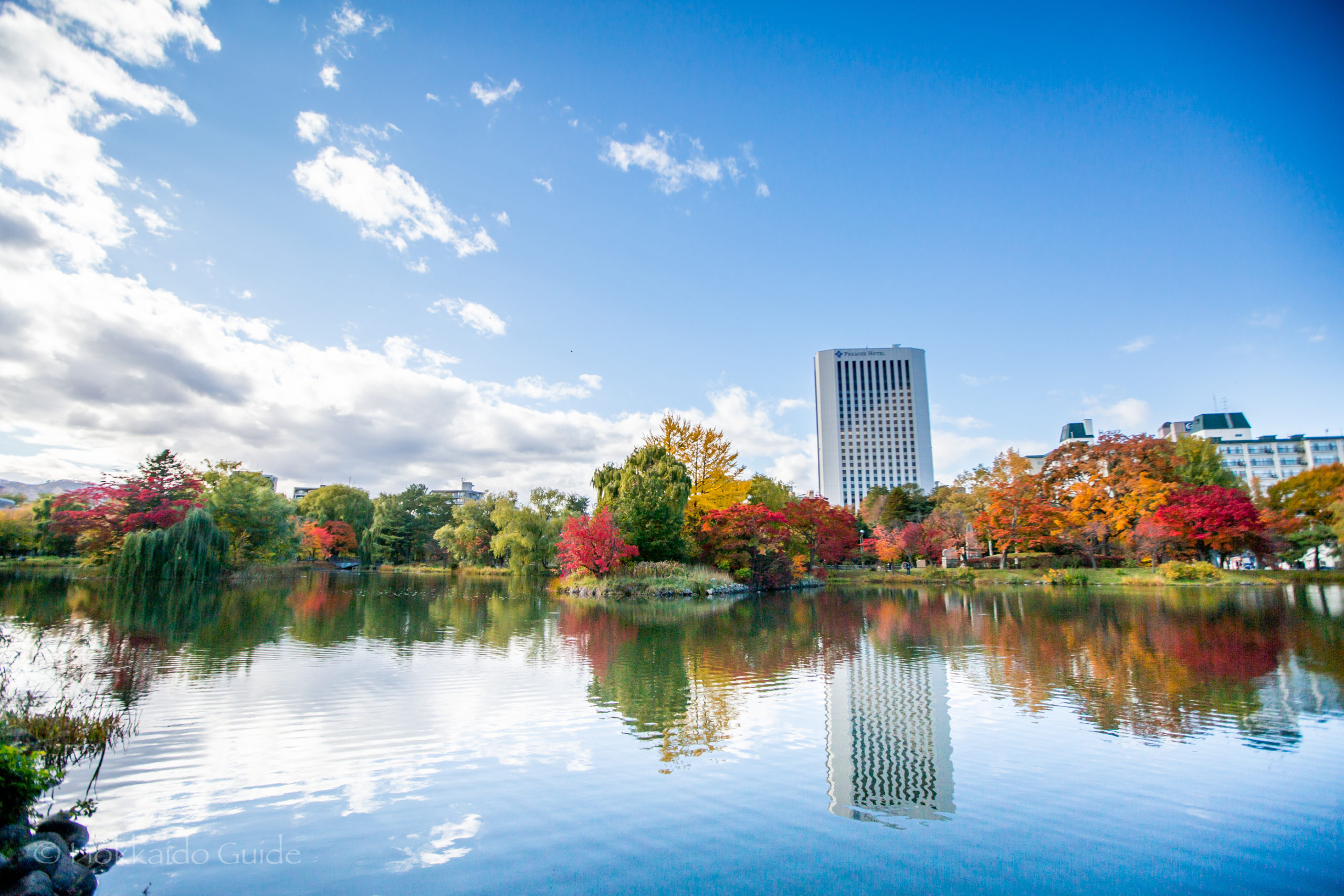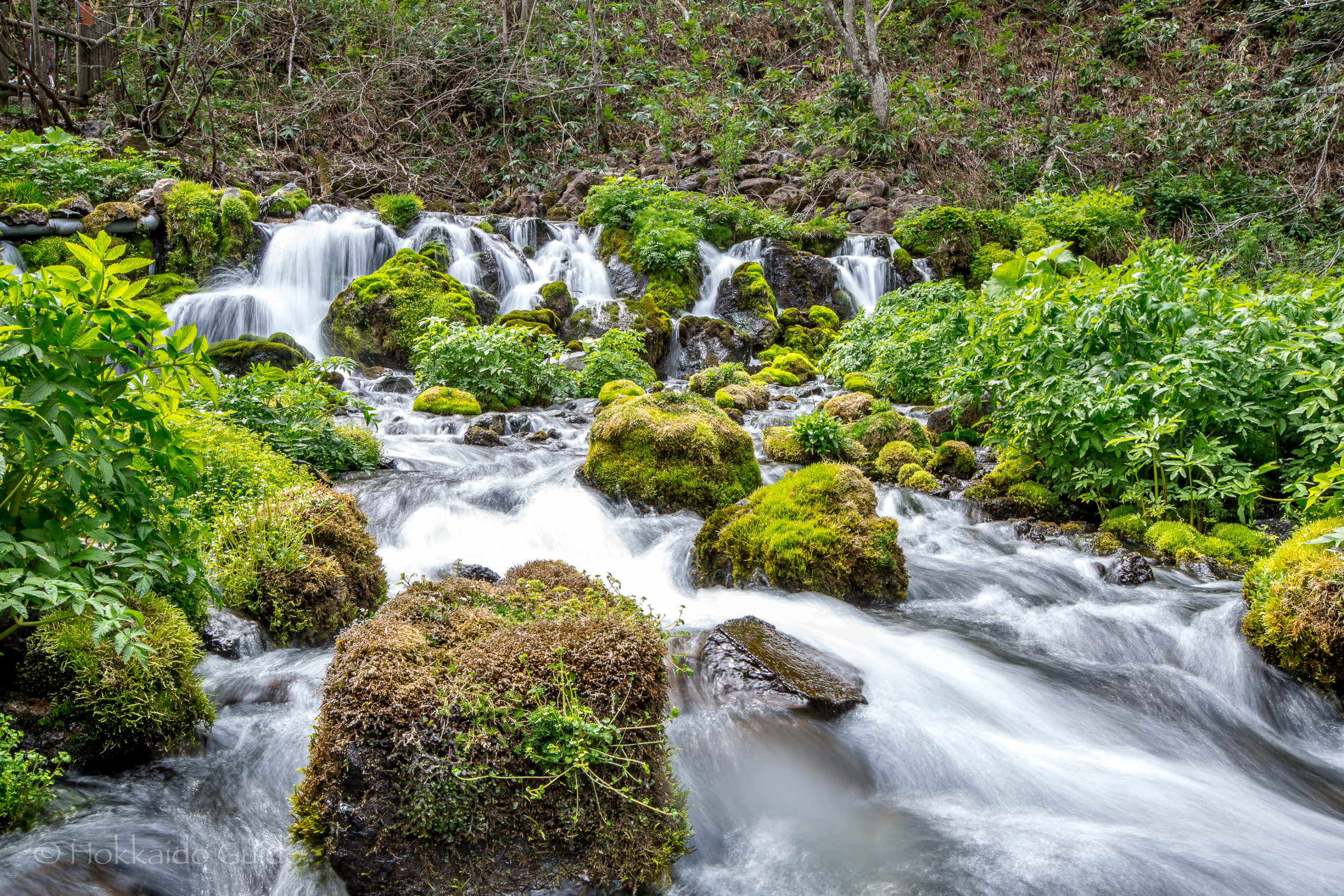
ฮอกไกโดตะวันออก
 Eastern Hokkaido is home to one of Japan’s largest fishing fleets, the huge Kushiro Marshland, the World Heritage Listed Shiretoko National Park and the beautiful Akan National Park area. This area is not only known for it’s incredible scenery and well preserved forests, but is also home to two of Hokkaido’s most famous hot spring areas called Akan and Kawayu. The area is also characterized by huge 2000 plus meter mountains and wide open plains for farming. This area produces huge amounts of farmed goods including vegetables, dairy products, flowers and flower related products. It is home to Hokkaido’s second largest city of Asahikawa as well as the famous Sounkyo Hot Spring area.
Eastern Hokkaido is home to one of Japan’s largest fishing fleets, the huge Kushiro Marshland, the World Heritage Listed Shiretoko National Park and the beautiful Akan National Park area. This area is not only known for it’s incredible scenery and well preserved forests, but is also home to two of Hokkaido’s most famous hot spring areas called Akan and Kawayu. The area is also characterized by huge 2000 plus meter mountains and wide open plains for farming. This area produces huge amounts of farmed goods including vegetables, dairy products, flowers and flower related products. It is home to Hokkaido’s second largest city of Asahikawa as well as the famous Sounkyo Hot Spring area.
![]() Accommodation
Accommodation
Abashiri –
Abashiri Prison Museum
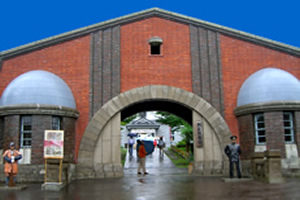
Abashiri Prison Museum
| Admission | Adults – ¥1080 H.S students – ¥730 Children – ¥520 |
| Opening Hours | 8:00 – 18:00 April to October 9:00 – 17:00 November to March |
| Closed | - |
| Contact | 0152-45-2411 |
| Getting There | *Buses operate from Abashiri Bus Terminal via Abashiri Station to the museum once every 1-2 hours (10 minutes, ¥240 one way from Abashiri Station) |
Abashiri –
Ice Breaking Ships
 During the cold winter, fresh water from the China-Russia border area freezes when it hits the chilly ocean. This ice then moves south toward Japan eventually reaching Hokkaido. There are various boats to take when wanting to view the ice floes but two of the more well known boats are the “Garinko” in Monbetsu and “Aurora” in Abashiri. The Garinko is fully equipped with an ice crusher on the bow and thus can make trips through the whole ice season the Aurora however sometimes cannot break the ice during the peak season but operates most of the time. There are also sea eagles and seals that follow the ice and they can sometimes be spotted from the boat. Cruises usually last for about an hour. These cruises are very popular and thus it is usually essential to make bookings in advance. Top
During the cold winter, fresh water from the China-Russia border area freezes when it hits the chilly ocean. This ice then moves south toward Japan eventually reaching Hokkaido. There are various boats to take when wanting to view the ice floes but two of the more well known boats are the “Garinko” in Monbetsu and “Aurora” in Abashiri. The Garinko is fully equipped with an ice crusher on the bow and thus can make trips through the whole ice season the Aurora however sometimes cannot break the ice during the peak season but operates most of the time. There are also sea eagles and seals that follow the ice and they can sometimes be spotted from the boat. Cruises usually last for about an hour. These cruises are very popular and thus it is usually essential to make bookings in advance. Top
| AURORA | |
|---|---|
| Admission | Adults ¥ 3000 Children ¥ 1500 |
| Opening Hours | January 20th to first Sunday of April Boat Departs January 9 am, 11 am, 1 pm, 3 pm February & March 9:30 am, 11 am, 12:30 pm, 2 pm, 3:30 pm, 4:30 pm (Special Sunset Cruise – Can be irregular) |
| Closed | - |
| Contact | 0152-43-6000 for Reservations & Information |
| Getting There | - |
Abashiri –
Shiretoko National Park
 Taking up most of Shiretoko Peninsula, Shiretoko National Park was World Heritage Listed in July 2005. The area is comprised of pristine, almost untouched, wilderness with steep mountains, small lakes and a wide variety of animals, including bears, foxes and other mammals and many birds including sea eagles. The area is also well known for its beautiful waterfalls, some of which flow directly into the sea of Okhotsk and can be viewed from sightseeing boat which departs from the port of Utoro. One of the famous waterfalls is called “Maiden’s Tears”. This waterfall is produced from warm water and thus steams as it falls. The lake area has a walking track and can be finished in about one (1) to two (2) hours. There is also cave Makkausu which was formed by seawater erosion. Inside the cave is a special type of luminous moss. The winter also often sees the area surrounded by floating ice. Top
Taking up most of Shiretoko Peninsula, Shiretoko National Park was World Heritage Listed in July 2005. The area is comprised of pristine, almost untouched, wilderness with steep mountains, small lakes and a wide variety of animals, including bears, foxes and other mammals and many birds including sea eagles. The area is also well known for its beautiful waterfalls, some of which flow directly into the sea of Okhotsk and can be viewed from sightseeing boat which departs from the port of Utoro. One of the famous waterfalls is called “Maiden’s Tears”. This waterfall is produced from warm water and thus steams as it falls. The lake area has a walking track and can be finished in about one (1) to two (2) hours. There is also cave Makkausu which was formed by seawater erosion. Inside the cave is a special type of luminous moss. The winter also often sees the area surrounded by floating ice. Top
| Admission | - |
| Opening Hours | - |
| Closed | - |
| Contact | - |
| Getting There | - |
Akan National Park

Located in Eastern Hokkaido, almost in the center between Kushiro City and Abashiri City, Akan National Park is an amazingly beautiful mountainous area typified by plentiful forest, crystal clear lakes and relaxing onsen areas. Akan is an extremely popular tourist area and is a stepping stone to the World Heritage Listed Shiretoko National Park. The Akan National Park is some 90 481 hectares in area and has a huge range of wildlife and also a Japanese Special National Natural Monument listed algae called “Marimo”. This very unusual type of algae forms itself into almost perfect balls and if left undisturbed long enough will grow to be the size of footballs.
Major areas of attraction in the Akan Park Area are:
Iozan, Lake Akan & Lake Akan Village (Akankohan), Lake Kussharo and Lake Masshu.
Transportation
By Car :Renting a car to travel around the Akan National Park area can be a good option, especially in the summer when the roads are in good condition. The Park itself has three highways running through it which service the towns and observation points and give access to Abashiri and Kushiro which are about one or two hours away. The winter however, will see these roads covered in snow and ice and therefore driving will be more hazardous. Also the national park has many wild animals and especially deer can be a hazard when driving at night. Take all caution and obey speed limits.
For a list of rental car agencies and contact info – Click Here.
By Bus :
The Akan Bus Service provides a variety of sightseeing buses that tour around the Akan area and make stops at various tourist destinations. There are also regularly scheduled buses running between the towns of Akankohan, Kawayu, Abashiri and Kushiro with stops at Lake Masshu. These buses however are relatively infrequent with only between 2 to 5 buses per day. Be sure to book ahead.By Train :
The only train line through the Akan National Park is the JR Senmo Line which runs from Kushiro to Abashiri. The stop in the park is the Kawayu Train Station just outside the small onsen town of Kawayu. The ride from Kushiro takes approximately 1.5 hours and costs ¥1 790. From Abashiri it takes approximately 2 hours and costs ¥1600. There are about 4 to 6 trains per day running from these locations. Top
 Iozan is an active volcanic mountain located just outside of the small onsen town of Kawayu. This area vents large amounts of sulphur and gasses and can be viewed up close. There are also several walking tracks in the area of differing lengths and difficulty. Around the mountain area it is also possible to buy eggs cooked by the natural steam of the volcano. There is also a rest house with bathrooms, small restaurant and souvenir store.
Iozan is an active volcanic mountain located just outside of the small onsen town of Kawayu. This area vents large amounts of sulphur and gasses and can be viewed up close. There are also several walking tracks in the area of differing lengths and difficulty. Around the mountain area it is also possible to buy eggs cooked by the natural steam of the volcano. There is also a rest house with bathrooms, small restaurant and souvenir store.
*Please remember that this area is an active volcanic area. If using the walking trails do not enter areas which have been fenced off as they will be unsafe. Top
|
Lake Akan & Lake Akan Village (Akankohan)
 Situated in the south-east area of Akan National Park, lake Akan is home to the Special Natural National Monument algae called “Marimo”. This highly unusual and highlyendangered species of algae forms itself into green balls and can grow to the size of a soccer ball. The largest confirmed example was about 30 cm in diameter. While the algae appears in several lakes in Japan, Lake Akan is the only lake with the right combination of environmental factors for the algae to form itself into balls.
Situated in the south-east area of Akan National Park, lake Akan is home to the Special Natural National Monument algae called “Marimo”. This highly unusual and highlyendangered species of algae forms itself into green balls and can grow to the size of a soccer ball. The largest confirmed example was about 30 cm in diameter. While the algae appears in several lakes in Japan, Lake Akan is the only lake with the right combination of environmental factors for the algae to form itself into balls.
The only town situated around the lake is the small onsen town of Akankohan. This pretty town has a variety of hotels, many of which have natural onsen baths. The hotels range in price from approximately ¥4000 pp/pn to ¥30000 + pp/pn. More expensive hotels are usually located on the lake shore with beautiful views of the lake and the surrounding area. If you choose stay at a hotel which does not have an onsen, it is usually possible to use the onsens in other hotels for a charge of about ¥500 to ¥1000 pp. Within the town is also a small Ainu (Native Hokkaido People) Village. The village consists of a small street lined with craft shops of Ainu products. At the end of the street is also a small Museum exhibiting various Ainu artifacts and there is also a hall where some traditional Ainu performances are held.
Other activities of interest are the ferries which do regular tours around the lake and stop off at some of the smaller islands and the Marimo Exhibition center and walking trails that wind there way through the lush forest to mud pools and observation spots. Trails start near the Akankohan Eco Museum a lovely and informative information center for the Akan National Park area. Admission is free and they have some English pamphlets and maps. Top
|
Lake Kussharo
 With an area of approximately 80 square km, Lake Kussharo is the largest lake in the Akan National Park Area . Many outdoor enthusiasts come here during the summer months to enjoy camping, cycling, fishing, hiking and kayaking / canoeing on the lake. The lake is also well known for the natural hot springs that are dotted around the lake. These springs are outdoor and free to use. Also unlike most Japanese hot spring it is fine to enter these while wearing swim suits. There is also a sand beach near the small town of Kawayu which has natural hot spring water. It is possible to dig a little into the beach and create your very own “Feet Hot Spring” called ‘Ashi-yu’ in Japanese. (Be careful the water is quite hot.) There are also several walking trails around the lake and many camping spots in the area. Top
With an area of approximately 80 square km, Lake Kussharo is the largest lake in the Akan National Park Area . Many outdoor enthusiasts come here during the summer months to enjoy camping, cycling, fishing, hiking and kayaking / canoeing on the lake. The lake is also well known for the natural hot springs that are dotted around the lake. These springs are outdoor and free to use. Also unlike most Japanese hot spring it is fine to enter these while wearing swim suits. There is also a sand beach near the small town of Kawayu which has natural hot spring water. It is possible to dig a little into the beach and create your very own “Feet Hot Spring” called ‘Ashi-yu’ in Japanese. (Be careful the water is quite hot.) There are also several walking trails around the lake and many camping spots in the area. Top
Lake Masshu
Considered to one of the most beautiful lakes in Japan this lake can also one of the most elusive. Known for its crystal clear and stunning blue water, the lake is often hidden by thick fog. The summer period especially often sees a lot of fog in the area. Those lucky enough to get a glimpse of this beautiful area can do so from two different observation areas overlooking the lake. Deck one has a large parking area and tourist facilities. Deck two is smaller, with a smaller parking area and no facilities but the parking is free. Lake Masshu is about one hour drive from Akankohan Village or about 15 minutes from Kawayu Village. Top
|
Asahikawa –
Asahikawa City Asahiyama Zoo
 Asahiyama Zoo is the most northern in Japan and houses a huge number of animals across a wide range of species. Some of the most popular exhibits are the polar bear house where it is possible to see the animals very close up through glass walls (This exhibit is particularly good at feeding time, but be sure to arrive early!). The penguin pool contains a 360° see through walk-way running through the middle of the pool. The seal house has a similar see through area. The large cat house allows visitors to see the animals close up through glass walls. Monkey mountain and the orangutan tower are also popular. There is a farm animal petting area for kids and also a small roller coaster. The zoo is open all year however many animals may be hibernating or closed indoors during the winter season. Top
Asahiyama Zoo is the most northern in Japan and houses a huge number of animals across a wide range of species. Some of the most popular exhibits are the polar bear house where it is possible to see the animals very close up through glass walls (This exhibit is particularly good at feeding time, but be sure to arrive early!). The penguin pool contains a 360° see through walk-way running through the middle of the pool. The seal house has a similar see through area. The large cat house allows visitors to see the animals close up through glass walls. Monkey mountain and the orangutan tower are also popular. There is a farm animal petting area for kids and also a small roller coaster. The zoo is open all year however many animals may be hibernating or closed indoors during the winter season. Top
| Admission | General ¥580 Summer period General ¥290 Winter period |
| Opening Hours | 9:30 am to 5:15 pm daily April 28th to October 20th 11 am to 2 pm November 3rd to March 30th |
| Closed | Winter period : Closed Wednesdays and Thursdays and December 30 to January 5th |
| Contact | - |
| Getting There | - |
Asahikawa –
Hokkaido Asahikawa Museum of Art
 Located in the south west corner of Tokiwa Park, the museum has a permanent exhibition of woodwork created in the Asahikawa area. Other regularly changing exhibitions are also on display at various times of the year. Exhibitions included Japanese and foreign art works and various exhibitions of famous writers from the central Hokkaido region. Top
Located in the south west corner of Tokiwa Park, the museum has a permanent exhibition of woodwork created in the Asahikawa area. Other regularly changing exhibitions are also on display at various times of the year. Exhibitions included Japanese and foreign art works and various exhibitions of famous writers from the central Hokkaido region. Top
| Admission | General admission is ¥100 however prices may vary for special exhibitions |
| Opening Hours | 10 am to 5 pm daily |
| Closed | Mondays, new year holidays and periodically for rearrangement of exhibitions |
| Contact | 0166-25-2577 |
| Getting There | In Asahikawa City Tokiwa Park (7 Jo Dori) |
Asahikawa –
International Dyeing & Weaving Art Museum
 Displaying works from more than 80 countries around the world this museum was the first of it’s kind in Japan. The majority of exhibits are from the 18th and 19th centuries and include a variety of famous tapestries and textiles. Examples of such works include the “Gobelin Tapestry” which was commissioned by Louis XV as a gift to the French Royal family and red dyed textiles from the Tang Dynasty in China. Top
Displaying works from more than 80 countries around the world this museum was the first of it’s kind in Japan. The majority of exhibits are from the 18th and 19th centuries and include a variety of famous tapestries and textiles. Examples of such works include the “Gobelin Tapestry” which was commissioned by Louis XV as a gift to the French Royal family and red dyed textiles from the Tang Dynasty in China. Top
| Admission | General fee ¥550 |
| Opening Hours | 9 am to 5:30 pm daily April to November |
| Closed | December to March |
| Contact | 0166-61-6161 |
| Getting There | 3-chome, Minamigaoka, Asahikawa |
Asahikawa –
Sanroku Entertainment Area
 Much like Sapporo’s Susukino entertainment area, this area is conveniently located next to the main down town area, less than 5 min. walk in a north-west direction from JR Asahikawa Station. Covering about 12 blocks and containing more than 1,300 bars, restaurants, clubs and cocktail bars Sanroku is definitely the center for nightlife in Asahikawa. Restaurants and entertainment facilities cater to any kind of budget ranging from the cheap to the extremely expensive. Specialties in this area are the sushi and crab shops however many other kinds of food can be found. There is a summer festival held in this area each year which brings out the Asahikawa residents for fun times and street parties. Top
Much like Sapporo’s Susukino entertainment area, this area is conveniently located next to the main down town area, less than 5 min. walk in a north-west direction from JR Asahikawa Station. Covering about 12 blocks and containing more than 1,300 bars, restaurants, clubs and cocktail bars Sanroku is definitely the center for nightlife in Asahikawa. Restaurants and entertainment facilities cater to any kind of budget ranging from the cheap to the extremely expensive. Specialties in this area are the sushi and crab shops however many other kinds of food can be found. There is a summer festival held in this area each year which brings out the Asahikawa residents for fun times and street parties. Top
| Admission | - |
| Opening Hours | - |
| Closed | - |
| Contact | - |
| Getting There | 6-chome, 3-jyo (And nearby area), Asahikawa |
Biei
 Biei is a small town located south-west of Asahikawa. The town is mainly famous for it’s beautiful scenery. Surrounded by slowly rolling hills, the landscape lends itself well to farming and has been divided up and put to this use. Some areas are used to produce various types of flowers in the summer months and thus a large colorful carpet can be seen in the mid summer. While the winter sees few crops the area is still particularly beautiful and well worth viewing for some postcard winter Hokkaido shots. Top
Biei is a small town located south-west of Asahikawa. The town is mainly famous for it’s beautiful scenery. Surrounded by slowly rolling hills, the landscape lends itself well to farming and has been divided up and put to this use. Some areas are used to produce various types of flowers in the summer months and thus a large colorful carpet can be seen in the mid summer. While the winter sees few crops the area is still particularly beautiful and well worth viewing for some postcard winter Hokkaido shots. Top
|
Furano
 Located approximately 30 min. drive south / south-west from Asahikawa Furano is well known for two main reasons, in winter skiing and in summer flowers. To find-out information about the Furano ski areas please visit our Winter Sports & Resorts page. While the winter offers large amounts of fresh snow and good ski areas the summer offers a colorful patchwork of beautiful flowers and scenery. There are several farm areas where beautiful flowers and plants can be viewed however the most famous of these flower farms is perhaps Tomita Farm. The farm consists of various fields planted with a variety of flowers in eye pleasing rows. The farm area is completely free of charge to look at. The farm earns it’s money by selling a variety of products directly to the consumer. Lavender is the main flower grown and many lavender products can be purchased including soap, perfumes and even lavender soda. There are several restaurant areas and lookouts. The flowers are at their peak from the end of July to the beginning of August. This area becomes particularly crowded on the weekend so if driving be aware it may take longer than usual and it is recommended to park your car before the farm area and walk as the car parking area often has up to 1 hour waits. Top
Located approximately 30 min. drive south / south-west from Asahikawa Furano is well known for two main reasons, in winter skiing and in summer flowers. To find-out information about the Furano ski areas please visit our Winter Sports & Resorts page. While the winter offers large amounts of fresh snow and good ski areas the summer offers a colorful patchwork of beautiful flowers and scenery. There are several farm areas where beautiful flowers and plants can be viewed however the most famous of these flower farms is perhaps Tomita Farm. The farm consists of various fields planted with a variety of flowers in eye pleasing rows. The farm area is completely free of charge to look at. The farm earns it’s money by selling a variety of products directly to the consumer. Lavender is the main flower grown and many lavender products can be purchased including soap, perfumes and even lavender soda. There are several restaurant areas and lookouts. The flowers are at their peak from the end of July to the beginning of August. This area becomes particularly crowded on the weekend so if driving be aware it may take longer than usual and it is recommended to park your car before the farm area and walk as the car parking area often has up to 1 hour waits. Top
|
Kushiro –
Akan International Crane Center
 This center was recently opened to help in the study and conservation of the Japanese crane which is still an endangered species. The center providesvisitors with useful information about the cranes as well as close up views of the cranes. The farming area around the town of Akan has been an artificial feeding ground for many years and large numbers of cranes will come for the winter season. Top
This center was recently opened to help in the study and conservation of the Japanese crane which is still an endangered species. The center providesvisitors with useful information about the cranes as well as close up views of the cranes. The farming area around the town of Akan has been an artificial feeding ground for many years and large numbers of cranes will come for the winter season. Top
| Admission | - |
| Opening Hours | 9 am to 5 pm daily |
| Closed | - |
| Contact | 0154-66-4011 |
| Getting There | Approximately 1 hour, 30 min from Kushiro JR Station by Akan bus. 23-40 Akan, Hokkaido |
Kushiro –
Kushiro Marshland
 The Kushiro marshland is home to more than 2000 species of precious plants and wildlife. It is a breeding ground for some of Japan’s endangered and rare species. The National Park Marshland area designated in 1987 covers some 26 861 ha. which accounts for approximately 60% of Japanese marsh area. The park was also the first in Japan to be designated under the special convention known as the Ramsar Convention for wetland protection. Types of animals living here include Hokkaido deer, Japan’s largest freshwater fish known as Hunchen, Siberian salamanders, white-tailed sea eagles andJapanese cranes. There have also been artifacts and items from the prehistoric age discovered here. There are several options for viewing the park including canoe rides, hot air balloon rides and even Japan’s slowest train which takes visitors for a ride around the park. For the more active there are also several wooden walkways which allow visitors to get close up views of many parts of the park.
The Kushiro marshland is home to more than 2000 species of precious plants and wildlife. It is a breeding ground for some of Japan’s endangered and rare species. The National Park Marshland area designated in 1987 covers some 26 861 ha. which accounts for approximately 60% of Japanese marsh area. The park was also the first in Japan to be designated under the special convention known as the Ramsar Convention for wetland protection. Types of animals living here include Hokkaido deer, Japan’s largest freshwater fish known as Hunchen, Siberian salamanders, white-tailed sea eagles andJapanese cranes. There have also been artifacts and items from the prehistoric age discovered here. There are several options for viewing the park including canoe rides, hot air balloon rides and even Japan’s slowest train which takes visitors for a ride around the park. For the more active there are also several wooden walkways which allow visitors to get close up views of many parts of the park.
*Strong recommendation : These walkways are through the marsh area so there are huge numbers of bugs and insects. YOU WILL NEED INSECT REPELANT TO ENJOY THE WALK. Also, although rare, bears do sometimes wander into this area. Stay alert and at times make a little noise by talking loudly to prevent problems.
Along the walkways there are several observation points :
Hokuto Viewpoint –
Hokuto view point is located along Route 53 and offers an unobstructed view of the expanse of the park. This view point is also about 5 min walk from Kushiro City Marsh Observatory. Top
Hosooka Viewpoint –
For a view of Kushiro river winding its way through the marshland head to Hosooka Viewpoint. There is also a nice view toward Mt. Oakan and Mt. Meakan in the background. If a little rest time is needed there is also a visitor’s lounge with a coffee shop and wetland display.Top
Kottaro Marsh Viewpoints –
The Kottaro Marsh Viewpoints consist of three points relatively close together. They offer views of different aspects of the marsh. The first has a 270°view of the Kottaro River and some nearby ponds. The second offers an overall view of the marsh and area. While the third is best known for beautiful sunrise views of the marshland. Top
Sarubo Viewpoint –
This view point is located near Route 391 and is approximately 72 m above sea level. It gives a 360° view of the marshland below and is bound by Lake Toro on one side and Lake Shirarutoro on the other. Top
| Admission | - |
| Opening Hours | - |
| Closed | - |
| Contact | Hosooka Visitors Lounge 0154 40 4455 |
| Getting There | Board a Sennmo Line train at JR Kushiro Station. Get off at Kushiro Shitsugen Station. It takes about 20 min |
Kushiro –
Nusamai Bridge
 Located not far from Fisherman’s Wharf (MOO), the Nusamai Bridge measures 124 m in length and was completed in 1976. The current bridge isthe fifth after others were destroyed by floods or replaced due to age. The bridge has sculptures representing the four seasons adorning it’s handrails along the way and is considered one of the most beautiful bridges in Hokkaido. The sculptures were produced by well known Japanese artists Shin Hongo and Churyo Sato. It is also lit by old style lamps which gives the bridge a romantic European feel at night. The bridge is particularly popular at sunrise and sunset when the lighting and mist combine to create the most romantic feel. Top
Located not far from Fisherman’s Wharf (MOO), the Nusamai Bridge measures 124 m in length and was completed in 1976. The current bridge isthe fifth after others were destroyed by floods or replaced due to age. The bridge has sculptures representing the four seasons adorning it’s handrails along the way and is considered one of the most beautiful bridges in Hokkaido. The sculptures were produced by well known Japanese artists Shin Hongo and Churyo Sato. It is also lit by old style lamps which gives the bridge a romantic European feel at night. The bridge is particularly popular at sunrise and sunset when the lighting and mist combine to create the most romantic feel. Top
| Admission | - |
| Opening Hours | - |
| Closed | - |
| Contact | - |
| Getting There | Approximately 10 min walk from JR Kushiro Station |
Kushiro –
Tancho (Japanese Crane)
 The Japanese cranes survival is nothing short incredible. During the Meiji Era the birds were hunted to the point of extinction by farmers and hunters fortheir meat and feathers. In the late 19th century it was thought that the birds, once quite common in Japan, were in fact extinct. However, about 70 years ago 10 cranes were discovered to be living deep in the Kushiro Marshland. During the harsh Hokkaido winter the birds could not find enough food to eat, so farmers began giving them corn. Since then the winter feedings have continued and conservation centers have been set up. The birds now number more than 600 and are slowly making a recovery. These elegant birds stand about 140 cm tall and have a wingspan of some 240 cm. They build large mounds for nests in the spring and lay only two eggs. Young birds can fly after about 3 months and become adults after 4 years. During the summer it is usually difficult to see the birds as they remain deep in the marshland raising their young. During the winter however they rely on the food from people to survive. There are several areas where the cranes can be observed during these feeding times. Birds gather at the Tsurumidai Plain, Tsurui / Itoh Japanese Crane Sanctuary and the Japanese Crane Observation Center. Top
The Japanese cranes survival is nothing short incredible. During the Meiji Era the birds were hunted to the point of extinction by farmers and hunters fortheir meat and feathers. In the late 19th century it was thought that the birds, once quite common in Japan, were in fact extinct. However, about 70 years ago 10 cranes were discovered to be living deep in the Kushiro Marshland. During the harsh Hokkaido winter the birds could not find enough food to eat, so farmers began giving them corn. Since then the winter feedings have continued and conservation centers have been set up. The birds now number more than 600 and are slowly making a recovery. These elegant birds stand about 140 cm tall and have a wingspan of some 240 cm. They build large mounds for nests in the spring and lay only two eggs. Young birds can fly after about 3 months and become adults after 4 years. During the summer it is usually difficult to see the birds as they remain deep in the marshland raising their young. During the winter however they rely on the food from people to survive. There are several areas where the cranes can be observed during these feeding times. Birds gather at the Tsurumidai Plain, Tsurui / Itoh Japanese Crane Sanctuary and the Japanese Crane Observation Center. Top
| Admission | - |
| Opening Hours | - |
| Closed | - |
| Contact | - |
| Getting There | - |
Kushiro –
Tsurui / Itoh Japanese Crane Sanctuary
 This sanctuary was established by the Wild Bird Society of Japan at what is known as the Itoh feeding station. In 1987 they built a small Nature Center for observing and studying the Japanese crane and this area then became known as the Ito Japanese Crane Sanctuary. On the first floor is an observation room and the second houses a study and information room. The winter season brings some 200 plus birds to the sanctuary. Top
This sanctuary was established by the Wild Bird Society of Japan at what is known as the Itoh feeding station. In 1987 they built a small Nature Center for observing and studying the Japanese crane and this area then became known as the Ito Japanese Crane Sanctuary. On the first floor is an observation room and the second houses a study and information room. The winter season brings some 200 plus birds to the sanctuary. Top
| Admission | - |
| Opening Hours | 9 am to 4:30 pm October 1st to March 31st |
| Closed | Tuesdays and Wednesdays, excluding national holidays |
| Contact | - |
| Getting There | Approximately 1 hour from JR Kushiro Station, then a 1 Km walk to the Sanctuary |

